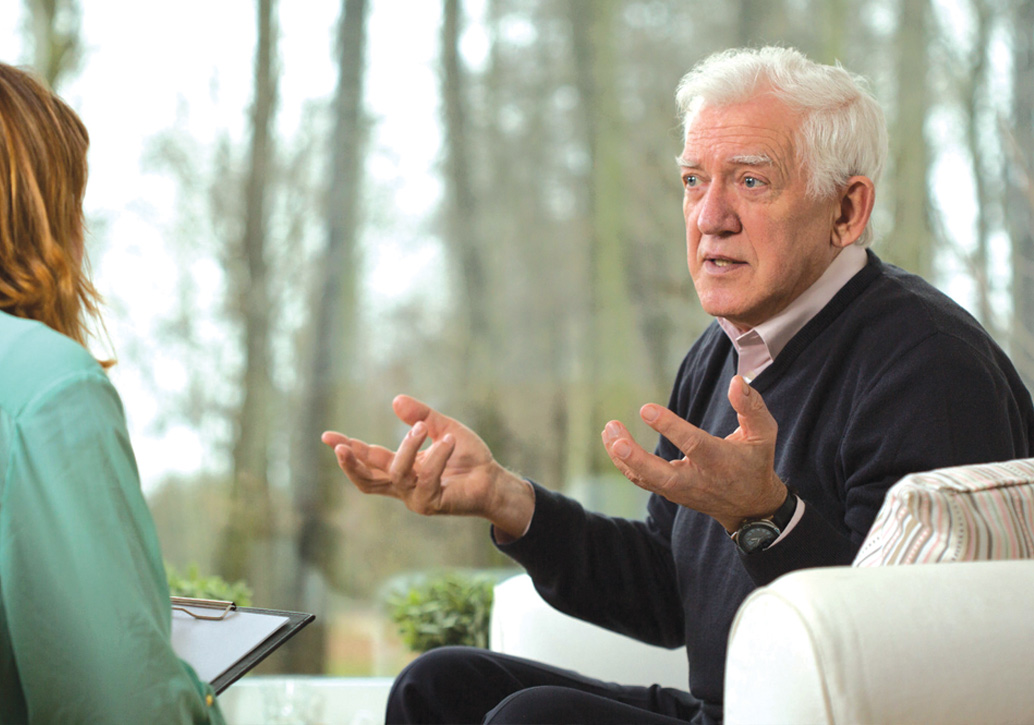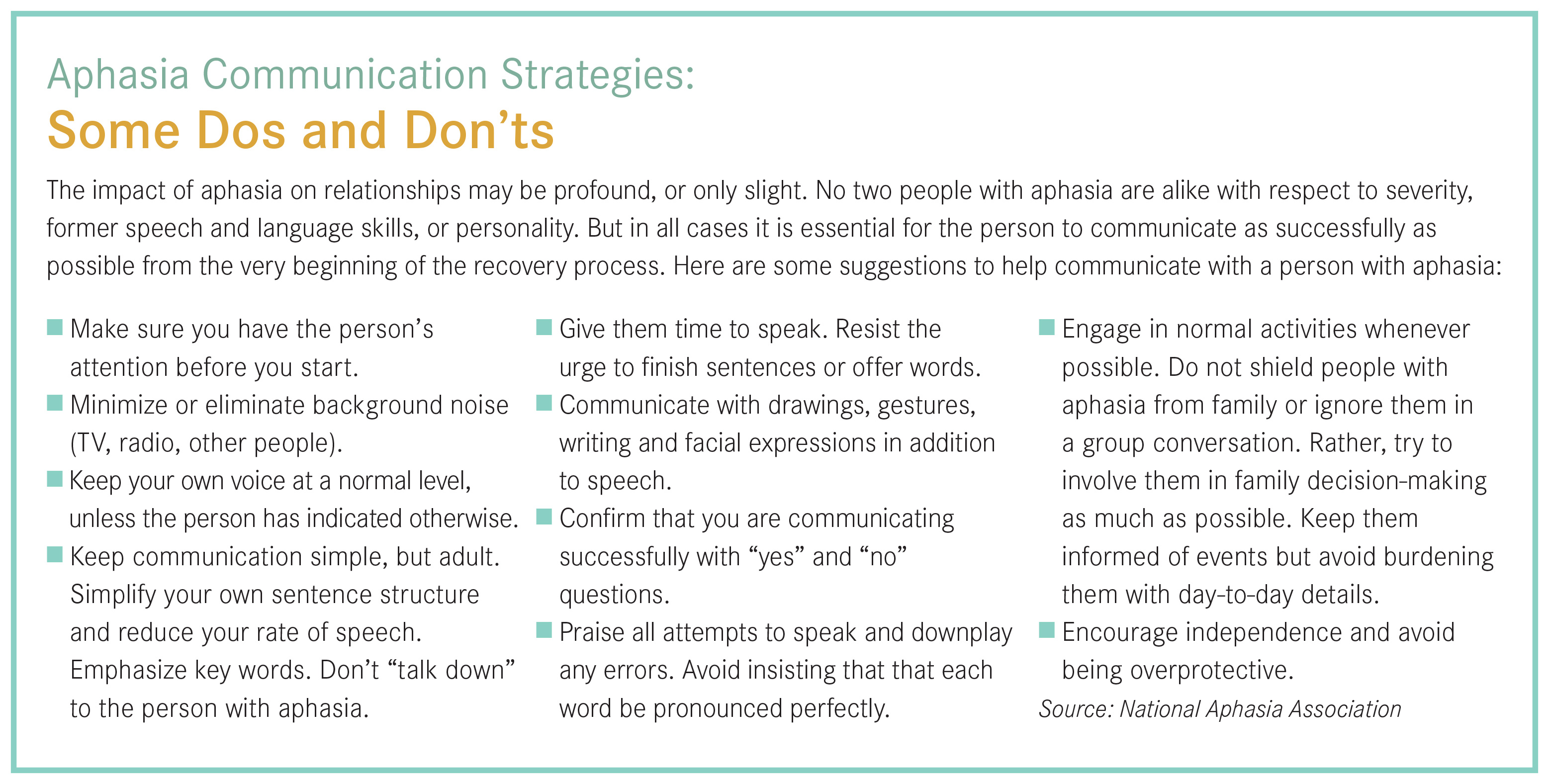Caregivers can face overwhelming physical, financial, and emotional demands as a function of their service. In the face of these challenges, communication can sometimes be difficult. This article presents techniques for compassionate communication, as well as ideas for caregiver self-care and empowerment.
By Jill Sarah Moscowitz
Communication is a process that allows a cyclical exchange of information through speaking and listening. However, as we all know, communicating is not as simple as that. Effective communication requires clarity from the person who is speaking and openness and attention from the person who is listening. This takes great commitment.
And to be compassionate, the communication should touch the heart. Compassionate communication can be understood through a breathing exercise. Put a hand on your heart; this is the centre of compassionate communication. Notice your state of well-being. Imagine your whole being is entirely cared for. Take a breath in and imagine this as a listening breath. Allow the breath to be touched by your heart, to be oxygenated and returned out. As you breathe out, imagine this as a speaking breath. And so is the cycle of breath and communication—incoming breath—touched by heart—and outgoing breath.
 Awareness
Awareness
Compassionate communication begins with an awareness of your own well-being because when we focus on our well-being we create a space for the well-being of others around us. We create a space for authentic listening and speaking.
Identify needs and values. To create a dialogue of compassion, become familiar with your needs, values, expectations, and motivations. How did the role of caregiver come to you? Was it out of choice, obligation or circumstance? Does this role fulfill an underlying need or value to give or to feel appreciated? What other needs or values may be present for you? Perhaps there may be the need or value for connection, sense of purpose, or financial security. Marshall B. Rosenberg, Ph.D. describes a list of “universal needs and values” that all humans share. To become familiar with this list visit www.cnvc.org/needs.htm.
Options for meeting needs and values. Once you’ve identified some of your core needs and values, you can evaluate how you might have these needs met. It’s possible that your needs are met through caregiving. It’s possible that you hope or expect these needs to be met through care giving, but they are not. Clarify for yourself what your expectations and motivations are and then determine what is realistic for this relationship. Use the “here and now” in your determination, rather than remembering how things were at one time or how you wish things to be. Consider all of the ways your needs and values can be met, including but not limited to this relationship.
Speaking with clarity
We all have years of experience in speaking, but may not have skills in expressing ourselves with clarity. Here are some suggestions:
Use “I” statements. Probably the easiest tip for compassionate communication is to use “I” statements. These statements begin with the word “I” and they clearly express something about our own view, not something about the other person. For example, “I am finding it hard to believe what you are saying.” Notice the difference between the “I” statement and the following “you” statement: “You are lying!” When we start sentences with the word “you” we tend to put the other person on the defensive.
Use observations, not evaluations. An observation is a statement of fact, similar to what might be recorded on a video camera. For example, the statement, “Aunt Ann has been talking on the phone for one hour.” An evaluation is a statement of fact with an added value (a judgment of good or bad). The statement, “Aunt Ann talks too much on the phone” is an evaluation.
Speak authentically. There are times when we choose to protect those we love from the truth about our feelings. We are the best judges of the impact of such non-disclosures. It’s possible that when we choose not to share our feelings, an opportunity for distance—not closeness—is created. Although it may feel very risky, the loving and heart-centred sharing of your feelings may be a beginning to more open communication. Sharing of feelings could begin with a sentence like, “When you said [insert the observation], I felt [insert the feeling].” See Marshall B. Rosenberg, Ph.D, (www.cnvc.org/nvc.htm) for more tools for authentic speaking.
Know many realities exist. If a group of five people go to the same movie and each is asked the question, “What happened in the movie?” we would get five each different stories. Each person’s story is based on the unique backdrop of each person’s perceptions. Many times our perceptions are based on our values or experiences. Remember, your reality belongs to you. Another person’s reality belongs to them. Neither reality is “right” or “wrong.” We simply perceive and interpret things based on our own values.
Listening with openness and attention
Many communication breakdowns occur because of difficulties in listening.
Waiting is not listening. So often in our conversations we are “waiting to speak” while the other person is talking. We are formulating our ideas in response to what is being said. We become engaged in our own thoughts and their importance. Anxiously waiting for the other person to stop talking, we find that we are not listening.
 Avoid unspoken stories. Another pitfall in listening is when we interpret rather than listen. While the other person is speaking, we create a story about what is being said. For example, a simple statement like, “I think you look very nice today” can be incorrectly interpreted to mean, “Today, unlike any other day, you look very nice.” So, you can see how easy it is to create your own story about someone’s communication.
Avoid unspoken stories. Another pitfall in listening is when we interpret rather than listen. While the other person is speaking, we create a story about what is being said. For example, a simple statement like, “I think you look very nice today” can be incorrectly interpreted to mean, “Today, unlike any other day, you look very nice.” So, you can see how easy it is to create your own story about someone’s communication.
Active listening. Listening is truly an art. It is a skill that can be acquired. One way to practice this skill is through active listening. Active listening is a technique in which the person listening re-states his or her understanding of what the speaker has said, before introducing their response to what has been said. For example; “What I heard you say is …” followed by, “Does that sound about right?
Reframe hostile or difficult communications. It’s possible that the person you are caring for may speak to you in anger. It may be helpful to consider that their anger may be due to their own frustrations, and not about you. For example, “You are no good! You never help me!” This statement might be reframed: “What I hear you saying is that you are wanting help and it feels like I am not helping now. Is that what you meant to say?” In hostile or difficult communications, it is sometimes helpful to involve a third neutral person to help with this type of communication.
At the very heart of compassionate communication is our desire to be collaborative—to hold a balance between our needs and the needs of the other. This is particularly important for caregivers who are so often looking after the needs of the other.
Jill Sarah Moscowitz has over twenty years combined experience in the fields of healthcare and conflict resolution. She offers training, mediation and counseling services in the New York metropolitan area. For more information, www.moscowitzmediation.com














